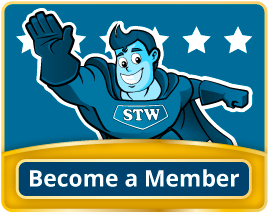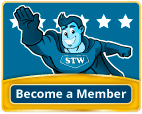4th Grade Common Core: RI.4.3
Common Core Identifier: RI.4.3 / Grade: 4
Curriculum: Reading Informational: Key Ideas and Details
Detail: Explain events, procedures, ideas, or concepts in a historical, scientific, or technical text, including what happened and why, based on specific information in the text.
80 Common Core State Standards (CCSS) aligned worksheets found:
This informative article compares and contrasts Thanksgiving in the United States to Thanksgiving in Canada. Approximately 3rd grade reading level.
(Approx. Grade Levels: 3-5)
(Approx. Grade Levels: 3-5)
Level:
Filing Cabinet
Logged in members can use the Super Teacher Worksheets filing cabinet to save their favorite worksheets.
Quickly access your most used files AND your custom generated worksheets!
Please login to your account or become a member and join our community today to utilize this helpful feature.
Learn the similarities and differences between butterflies and moths.
Level:
Bighorn Sheep have horns that weigh up to 30 pounds. Males will battle by ramming each other in the head.
Level:
From ancient cave discoveries to Aztec ceremonies to playing a part in the invention of the microwave, popcorn has a fascinating history.
Level:
Discover the stink bug - an animal that uses a noxious odor to scare enemies away.
Level:
This biographical article highlights the major events of Abraham Lincoln's life.
Level:
A short biographical overview of Gertrude Ederle, the first woman to swim across the English Channel.
Level:
Learn about the three layers of the skin, and find out how skin keeps our bodies safe and healthy.
Level:
Fennec Fox FREE
The bushy-tailed, big-eared fennec fox in an amazing species that is adapted to live in desert climates.
Level:
Learn how alligators and crocodiles are different and how they're similar.
Level:
Read about the lucky turkeys that have been pardoned by American presidents throughout history.
(Approx. Grade Levels: 4-5)
(Approx. Grade Levels: 4-5)
Level:
Here is a nonfiction passage about the desert cottontail, an interesting animal that lives in the American southwest.
Level:
This short biography of Walt Disney is filled with interesting facts. Students read the biography and test their comprehension with the questions that follow.
Level:
In 1953, two climbers, Edmund P. Hillary and Tenzig Norgay, became the first men to climb to the summit of Mount Everest.
Level:
When President Theodore Roosevelt wouldn't shoot a bear on a hunting trip, he became known as a kind and humane person. The toy that was named after him reminds us of his legacy.
Level:
Discover everything you wanted to know about spiny hedgehogs.
Level:
This passage features an overview of George Washington's life.
Level:
Are dragons real? You bet they are. Indonesians know all about the fierce lizard known as the Komodo dragon.
Level:
Learn the similarities and differences between boas and pythons with this compare/contrast article.
Level:
Have you ever heard of a barking deer? If you visit South Asia you may see muntjacs - small deer that bark like dogs.
Level:
Find out about three different subgroups of arthropods- insects, arachnids, and myriapods.
Level:
Dr. Seuss Biography FREE
Read all about the life and works of Theodore Seuss Geisel. This passage was written at a 3rd or 4th grade reading level. There is also a page of reading comprehension questions to answer at the end of the passage.
Level:
Discover how jaguars live and hunt, and learn why these beautiful animals are endangered.
Level:
Students will enjoy reading about bats, skunks, owls, and other nocturnal animals.
Level:
Learn how walnuts grow, and why they're important to people.
Level:
Learn about the anatomy and behaviors of one of the most feared spiders in the world.
Level:
Learn all about roly-poly pill bugs by reading this free high-interest article. Then, answer the comprehension questions.
Level:
Are grasshoppers a farmer's friend or foe? Actually, both. Find out how grasshoppers can help and harm humans.
Level:
Bee Hummingbird FREE
The world's smallest bird - the bee hummingbird - can hover in place, fly upside down, and even fly backwards.
Level:
This nonfiction article describes the many unknown virtues of dandelions.
Level:
This strange looking animal has four legs, a long snout, large ears,and lurks in the forests of Central and South America.
Level:
The hammerhead shark is one of the fiercest and most dangerous animals in the sea. It uses electroreceptors in its unusual-shaped head to find prey.
Level:
The flamingo is one of the most recognized birds in the world because of it's unusual body shape and hot-pink feathers.
Level:
Read about the three different types of wetlands: swamps, bogs, and marshes.
Level:
Can your students tell a reptile from an amphibian? This compare and contrast article will help students learn the differences between these two vertebrate groups.
Level:
The honey badger is arguably the most fearless animal on Earth. It eats porcupines and venomous snakes, raids beehives for honey, kidnaps baby cheetahs, and steals food from hungry lions.
Level:
Even though they are sometimes called earth pigs, aardvarks aren't really related to pigs at all.
Level:
It's not a bird, nor a plane. It's a flying fish! Learn all about these strange animals.
Level:
Learn how dolphins and porpoises are alike, and how they're different. This article includes a question page, a Venn diagram, and a vocabulary activity.
Level:
The article explains how constellations got their names (comparing it to finding pictures in the clouds) and how the same constellation can be known by different names across the globe.
Level:
The wolverine is a solitary, but fierce, hunter who lives in snowy, northern climates across the world.
Level:
An article about the history of the Jack o' Lantern. Includes comprehension and vocabulary questions.
(Approx. Grade Levels: 3-5)
(Approx. Grade Levels: 3-5)
Level:
Chameleons can change color, rotate their eyes, and have toes that are specially adapted for climbing.
Level:
Read about the differences between carnivores, omnivores, and herbivores.
Level:
In Hawaii, Santa arrives in an outrigger canoe, or sometimes he even catches a wave and surfs into the islands. Learn about this, and other unique Hawaiian Christmas traditions.
(Approx. Grade Level: 4-6)
(Approx. Grade Level: 4-6)
Level:
Comparing two texts - an article and a poem; Learn about Venus Flytraps and answer the questions.
Level:
Longhouses are a type of home once used by many Native Americans--most notably the Haudenosaunee (also known as Iroquois). This short passage gives readers facts about these unique structures and is followed by a page of reading comprehension questions.
Level:
Learn all about whale sharks - the world's largest fish! This reading comprehension activity includes questions about the text, vocabulary words, and a writing prompt. An answer key is included.
Level:
Did you know koi are a kind of carp? Koi come in a variety of colors, patterns, and fin shapes. They're lovely to look at, but their price and life spans might surprise you!
Level:
Your students will learn about how the first settlers in America established their colonies and the hardships they faced.
Level:
In 1932, aviation pioneer Amelia Earhart became the first female pilot to fly solo across the Atlantic.
Level:
Learn about the Pentagon with this reading comprehension passage. The worksheet includes a vocabulary exercise, short answer and multiple choice questions, and a writing prompt.
Level:
This article describes the anatomy and habitat of major shark species. It also describes why many types of sharks are endangered.
Level:
This worksheet shows Howard Chandler Christy's famous painting of the signing of the U.S. Constitution. Students can use information from the picture and their own research or facts they've learned in class to answer the questions.
Level:
This reading comprehension article and worksheet gives a great overview on the concept of erosion.
Level:
Did you know that lions are the only wild cats to live in cooperative groups, called prides? Learn this, and other interesting facts, about lions in this reading comprehension article. Includes comprehension questions, vocabulary words, and a writing prompt.
Level:
The cards on this printout can be hidden around the room for students to find. When they find each one, they can read it and answer the corresponding question on their worksheet.
Level:
Learn all about the sleep cycle, dreaming, and more in this fascinating nonfiction article!
Level:
The Middle East is known for its dry and arid climate, so how did it end up as home to some of the earliest known farming and the first civilizations? Read this article to find out!
Level:
John Jay co-wrote the Federalist Papers with Alexander Hamilton and James Madison. He was also appointed the first Chief Justice of the Supreme Court.
Level:
This prehistoric reptile looks like a small dinosaur. It has a thick tail, clawed feet, and strong jaws. Underwater, they keep their mouths open, and use their worm-like tongue to lure in prey.
Level:
Read about the Newfoundland pony, an animal known for its strength, courage, and common sense. Then answer a series of reading comprehension questions, complete a vocabulary activity, and respond to a writing prompt.
Level:
Did you know that stingrays are in a group of fish called batoids because their bodies look like bats gliding through the water? Learn this and other interesting facts about stingrays in this reading comprehension activity!
Level:
The Appalachians are some of Earth’s oldest mountains. They run through several provinces and more than a dozen states. Find out how they were shaped and how they shaped communities in this article.
Level:
Samuel Adams was born in Boston, Massachusetts. He helped write the Articles of Confederation, signed the Declaration of Independence, and served as governor of Massachusetts.
Level:
Hoover Dam was built on the border of Arizona and Nevada. It provides thousands of homes and businesses with clean, hydroelectric power from the Colorado River.
Level:
Read about Mount St. Helens and its famous volcanic eruption. Then answer reading comprehension questions about the article.
Level:
Learn the history behind the rallying cry used in both the Texas Revolution and Mexican-American War. File comes complete with a territory map, six questions, vocabulary crossword, and creative writing prompt.
Level:
Sacagawea was a Native American woman from the Lemhi Shoshone tribe who assisted members of the Lewis and Clark Expedition.
Level:
This article includes lots of facts about the amazing saguaro cactus of the Sonoran Desert. Test students' reading comprehension skills by having them answer the questions after reading the article.
Level:
Read about the Colosseum, an iconic building in Rome, Italy, and answer questions about it. Questions include multiple choice, short answer, a vocabulary activity, and a writing prompt.
Level:
Did you know people have been chewing gum for thousands of years? Learn about the history of bubble gum in this fascinating article! Reading comprehension questions, writing prompt, and vocabulary words are included in this activity.
Level:
Elizabeth Blackwell was the first woman doctor in the United States. Read this short article to learn more about her life.
Level:
This non-fiction article explains how Navajo secret agents helped the US Marines during World War II.
Level:










